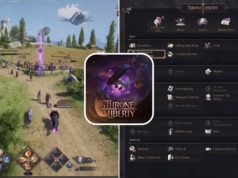Learn how to build a complete IoT data mining, analytics, and visualization system from start to finish.
Join the DZone community and get the full member experience. In a typical enterprise use case, you always start from something small to evaluate the technology and the solution you would like to implement, a so-called “Proof Of Concept” (POC). This very first step is fundamental to understanding technology’s potential and limits, checking the project’s feasibility, and estimating the possible Return on Investment (ROI). This is exactly what we did in the use-case of a people counting solution for a university. This first project phase aimed to identify how the solution’s architecture should look and what kind of data insights are relevant to provide. Another important part of the project was to match data from the room booking system of the university with accurate occupancy data. This is fundamental to evaluate if a room is occupied for a formal or informal event and therefore understand how to optimize the university’s spaces. The architecture described below is intended for the POC only. Still, it has been fundamental to understand how to scale the solution to a higher level of complexity by integrating more sensors in a second phase. How the enterprise-level architecture will be derived is described later within this article. We have chosen Xovis Sensors as people counting devices. These sensors can detect people via two cameras mounted on the sensor and an AI engine directly on the device. The data is processed on edge and the devices transmit people coordinates as distinct dots only through an HTTP connection. This allows the solution to be compliant with data protection guidelines. Akenza is our IoT Low-Code Platform that seamlessly works with Xovis sensors. It allows us to integrate one of these sensors in minutes. Furthermore, Akenza provides the flexibility to scale the solution to thousands of devices if needed. This was very important for our POC as we wanted to solve the IoT part fast and cost-effectively to concentrate our efforts on the data analysis part and its scalability. The problem with a people counting solution is that data needs to be aggregated to be correctly understood and processed on a BI solution. For that, we used a custom logic block available on Akenza’s Rule Engine. This custom logic block is a piece of JavaScript code that allows us to customize data processing directly inside Akenza. Akenza provides this component as a standard block to work with people counting solutions. So, fortunately, it wasn’t required to write any single line of code and we simply reused this logic block as a black-box into the Rule Engine. The result is a series of messages in well-formed JSON format, which reports every event (one person in/out) and aggregates the flow into an effective occupancy (number of people in the room as peopleIn). For the POC, we based our architecture on Akenza’s APIs to achieve faster results and focus on the data analysis solution.






